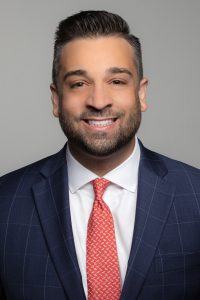By Nancy Burner, Esq.

A Descendants Trust (commonly referred to as an Inheritor’s Trust) is a trust that is created under a person’s living trust or last will and testament that only comes into effect upon the death of the creator (“Grantor” in the case of a trust or “Testator” if a will). When a person leaves an inheritance for a beneficiary, he/she can choose to leave the share to the beneficiary outright or in a further Descendants Trust.
If left in a Descendants Trust, the inheritance: (1) can be protected from the beneficiary’s creditors, (2) will avoid becoming marital property subject to equitable distribution upon the beneficiary’s divorce, and (3) will be better preserved for future generations.
One advantage of a Descendants Trust is that if it is drafted correctly it can offer creditor protection for the beneficiary. Typically, the terms of the Descendants Trust will provide that income generated by the trust (e.g. interest, dividends) is distributed to the beneficiary annually/quarter-annually and trust principal can be distributed for the beneficiary’s health, education, maintenance, or support (“HEMS”) if the beneficiary is acting as his/her own trustee.
Otherwise, an independent trustee (a person not related by blood or marriage to the beneficiary and is not subordinate to the beneficiary i.e. does not work for the beneficiary) can distribute trust principal for any purpose. By limiting distributions in this way, the trust property will be beyond the reach of the beneficiary’s creditors and protected from any potential judgments.
A second advantage of Descendants Trusts is that they are an effective tool of protecting the beneficiary’s inheritance in the event of divorce. Generally speaking, when people get divorced they each retain their “separate property” while “marital property” is equitably divided by the court. Separate property includes property received as an inheritance, but if that inherited property is comingled with other marital property during the marriage, it can be subject to equitable distribution upon divorce.
However, if the inheritance is left in a Descendants Trust and the beneficiary keeps the inheritance in the trust and avoids comingling it, the property will be protected from the beneficiary’s spouse should they get divorced.
Another benefit of a Descendants Trust is that it is a good vehicle for preserving wealth for future generations. When property is left to a beneficiary outright, it simply becomes a part of the beneficiary’s own estate, and thus will pass according to his/her own estate planning documents upon his/her death. However, the terms of a Descendants Trust can stipulate the contingent/remainder beneficiaries so, for example, one can provide that upon a child’s death their share is to pass to his/her children in further trust.
Additionally, for high net-worth individuals with taxable estates, by limiting distributions of trust principal for HEMS, as discussed above, property passing into the Descendants Trust will remain outside of the beneficiary’s taxable estate, saving the beneficiary potential estate taxes upon his/her own death.
A Descendants Trust can be a great option for those who want to leave property to beneficiaries with creditor issues, beneficiaries going through a divorce, high net-worth individuals, or simply for beneficiaries lacking fiscal responsibility where it would be best for their inheritance to be managed by another person as trustee. An experienced elder law attorney can advise you as to whether a Descendants Trust makes sense for your particular situation and estate planning goals.
Nancy Burner, Esq. is a Partner at Burner Prudenti Law, P.C. focusing her practice areas on Estate Planning and Trusts and Estates. Burner Prudenti Law, P.C. serves clients from New York City to the east end of Long Island with offices located in East Setauket, Westhampton Beach, Manhattan and East Hampton.










 When you’re working, you may spend decades contributing to retirement accounts such as your 401(k) and IRA. Once you’re retired, though, you’ll likely need to begin withdrawing from these accounts to help pay for your living expenses. In fact, you’ll be required to take money from them at a certain age — but that age requirement is changing, and it could lead to changes in your financial strategy.
When you’re working, you may spend decades contributing to retirement accounts such as your 401(k) and IRA. Once you’re retired, though, you’ll likely need to begin withdrawing from these accounts to help pay for your living expenses. In fact, you’ll be required to take money from them at a certain age — but that age requirement is changing, and it could lead to changes in your financial strategy.



